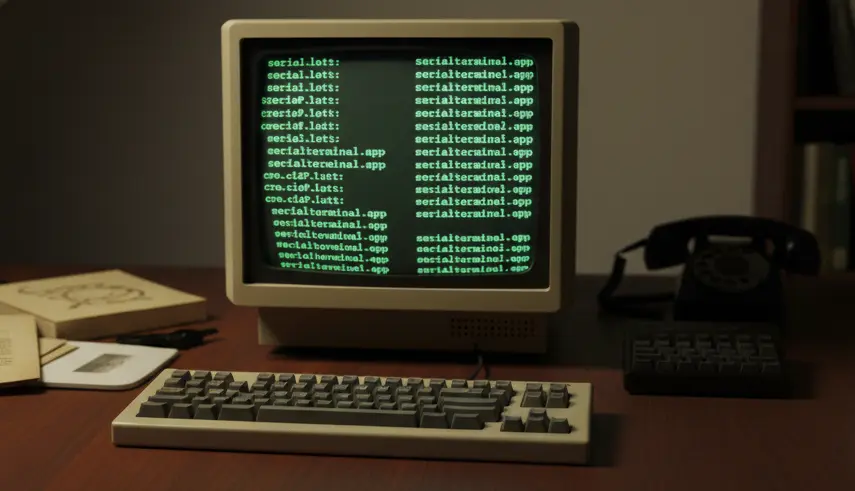What is a Serial Terminal? A Simple Explanation
Have you ever wanted to have a direct conversation with a piece of electronics? Not with a keyboard and mouse, but a simple, direct text chat? That's the best way to think about a serial terminal.
~3 minutes

Have you ever wanted to have a direct conversation with a piece of electronics? Not with a keyboard and mouse, but a simple, direct text chat? That's the best way to think about a serial terminal.
In a world of fancy graphical interfaces, the serial terminal is a powerful tool that gets back to basics. It’s a program that lets your computer send and receive text-based information through a connection called a serial port.
The "Direct Message" Analogy
Imagine your computer is you, and a small electronic device—like an Arduino, a Wi-Fi router, or a smart thermostat—is a friend you want to text.
- You can't just talk to them; you need a phone and a phone number. The serial port is that phone number. It's a specific, direct channel to the device.
- The serial terminal is your messaging app (like WhatsApp or iMessage). It gives you a window where you can type messages to send and see messages you receive.
When you plug a device into your computer's USB port, it often creates a virtual serial port. A serial terminal like serialterminal.app connects to that port and opens up a direct line of communication. The device can send you status updates, sensor readings, or error messages, and you can type commands back to it.
What Is It Used For?
So why do we need this simple text chat? It's incredibly useful for three main tasks:
-
Seeing What a Device is Thinking (Debugging): When developers create electronics, they program the device to send messages about what it's doing. If an Arduino project isn't working, they can look at the serial terminal to see messages like "Connecting to Wi-Fi..." followed by "Failed to connect!". It’s like looking over the device's shoulder as it works.
-
Giving a Device Commands (Configuration): Many professional devices, like network switches or lab equipment, don't have screens. To set them up, an engineer connects a computer, opens a serial terminal, and types in configuration commands to set a password, assign an IP address, or change settings.
-
First-Time Setup: When you get a new device like a Raspberry Pi, it might not be connected to Wi-Fi or a monitor yet. Using a serial terminal is often the very first step to get in and set it up.
Simple, Powerful, and Universal
While it may seem old-fashioned, the serial terminal is one of the most reliable and universal tools in electronics and engineering. It doesn't need complex drivers or fancy software—just a connection and a simple program to listen.
Ready to start your first conversation with a device? Our next article, Your First Connection with serialterminal.app, will walk you through the simple steps to get started.